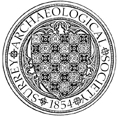Report by I Devine and C Bartlett of a well within land proposed for redevelopment. The well appears to have been sunk into water-bearing sands, using the cast iron caisson principle. The date of construction is not known, but is likely to relate to the nearby hospital farm, Brookwood Farm, built in the late 19th century. (SIHG 85)
